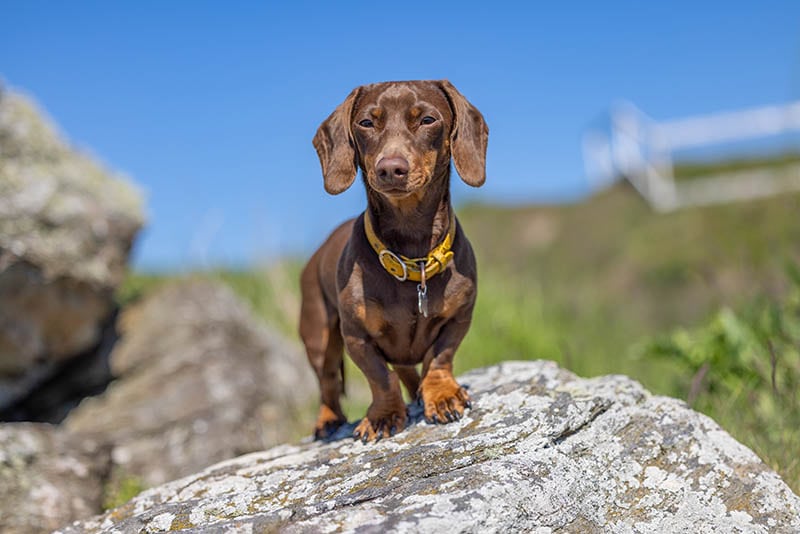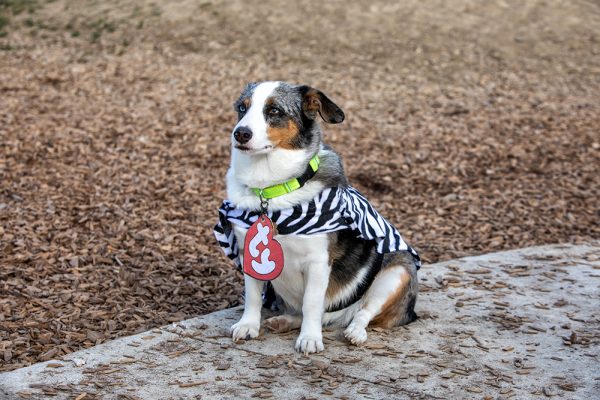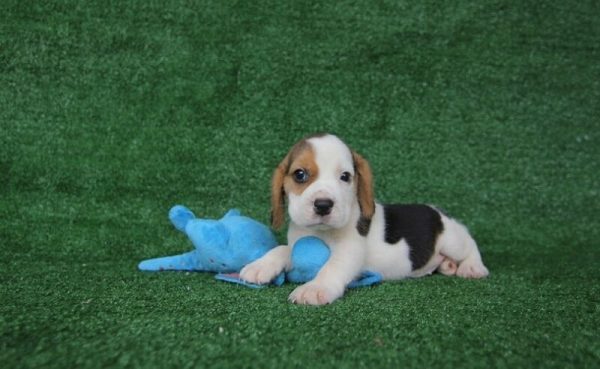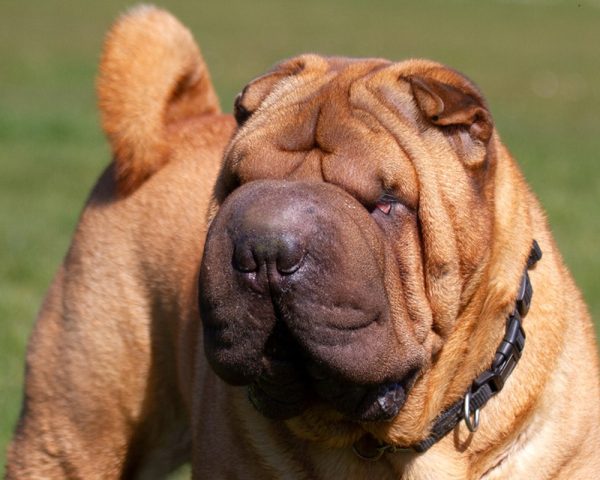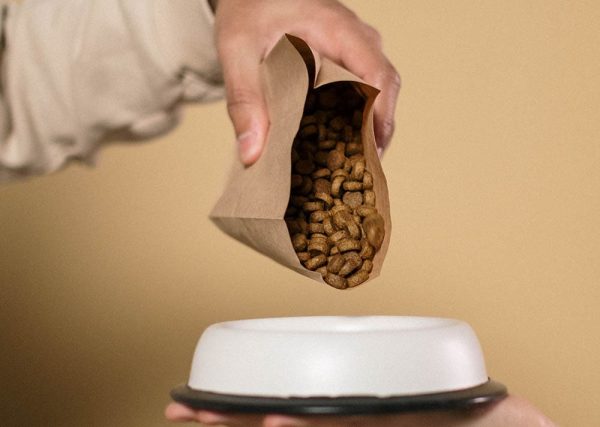Understanding the canine heat cycle can be tricky, especially when it differs depending on various factors. One thing heat cycles have in common is that they typically last approximately 2 to 4 weeks. However, the age at which dogs enter their first estrus (heat) and how often it occurs is different from dog to dog.
If you’re a new Dachshund parent and want to know more about what the heat cycle looks like for smaller dog breeds, we endeavor to answer all of your questions.

What Exactly Is “Heat”?
Technically called estrus, being “in heat” or “in season” is the stage of the heat cycle in which female dogs are fertile and receptive to male dogs. In short, it’s the time in which the female dog can get pregnant. Dogs cannot get pregnant if they’re not in heat.
It can only occur in unspayed dogs—many owners choose to have their dogs spayed to prevent unwanted pregnancies and unwelcome overtures from male dogs. Contrary to popular belief, you don’t have to wait until your dog has gone through her first heat cycle before getting them spayed.
Spaying can also help prevent ovarian, uterine, and mammary gland cancers, false pregnancies, and unwanted behaviors like roaming and guarding tendencies that can come with the heat cycle. Let’s take a closer look at some of the signs that indicate a female dog is in heat.
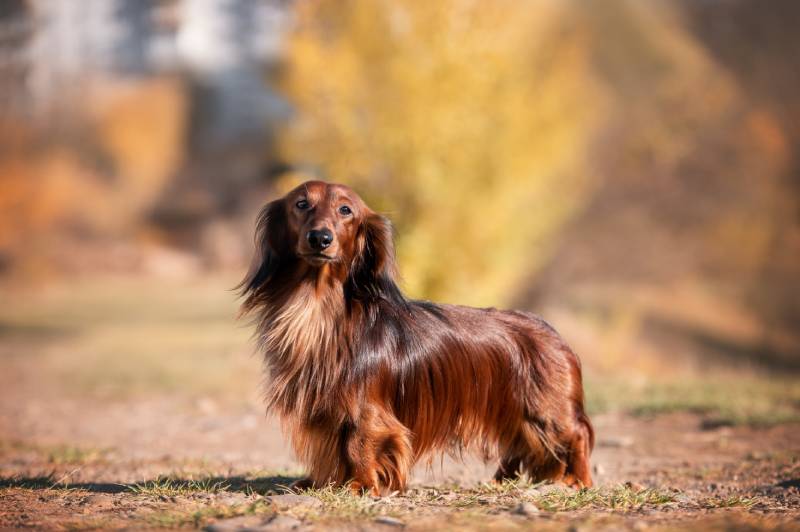
Signs of Heat
There are many signs that a dog is in heat, and these take the form of both physical and behavioral changes.
- Swollen vulva
- Discharge from the vulva that may contain blood
- Licking of the genitals
- More frequent urination
- Lethargy
- Irritability
- Clinginess
- Looking for male dogs
- Excessive friendliness toward male dogs
- Humping
- Mounting
- Guarding behavior (including objects around the home)
- Grooming more than usual
The first stage of the heat cycle, called proestrus, lasts approximately 1 week and involves the beginning of your dog’s physical changes; mainly, a swollen vulva and bloody discharge. During this phase, females will be attractive to males but won’t be receptive yet. When estrus, the second stage, starts, dogs will be ready to mate, and you will notice a more straw-colored vaginal discharge.
It’s also worth noting that the amount of discharge from the vulva may differ depending on the dog’s size. Smaller breeds are more likely to bleed less than larger breeds, but this isn’t a cast-iron rule as it can vary.
Moreover, it’s important to note that your Dachshund should not bleed for the entire heat cycle. Bleeding typically only lasts between 1 week and 10 days and can range from light to heavy.
If you need guidance on caring for your dog in heat, we suggest you speak to a vet.
When Do Dachshunds First Go into Heat?
Dogs enter their first estrus period at around 6 to 12 months of age on average, but smaller dogs like Dachshunds can go into heat typically around the 6-month mark. On the other hand, large and giant breeds may reach 12 to 18 months of age when they enter their first heat cycle. Some large dogs even pass the 2-year mark before going into heat for the first time.
It’s important to note that the first time they go into heat tends to be different from the rest, meaning that it may go unnoticed or last longer.
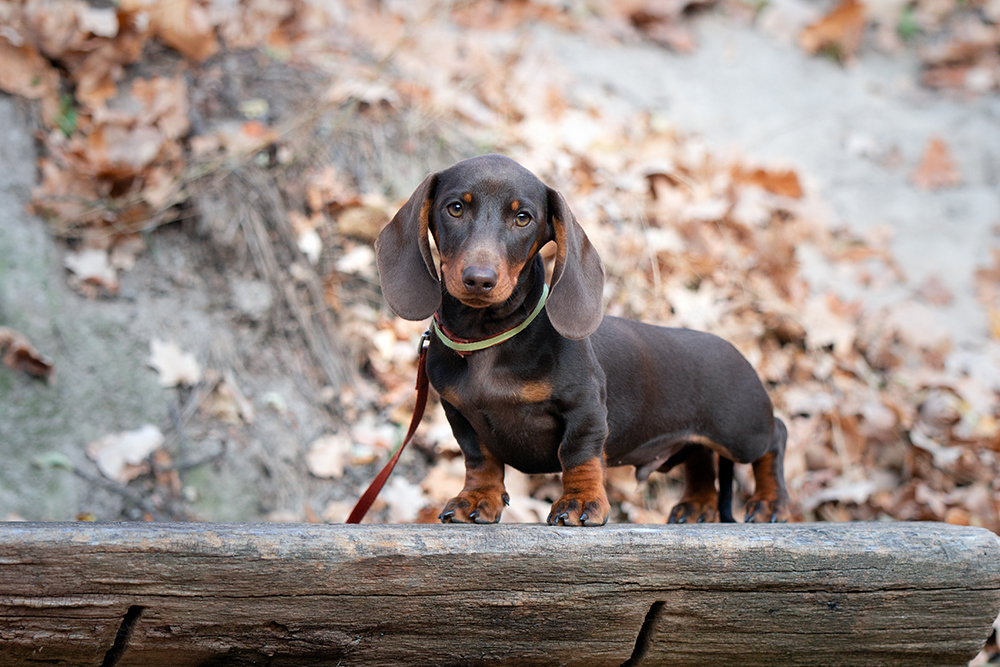
How Often Do Dachshunds Go into Heat?
Unspayed female dogs go into heat periodically for their whole lives. On average, dogs go into heat once every 6 months, but this can vary depending on breed and size.
Your Dachshund’s estrus cycle might be irregular early on, but it should even out by the time they’re 2 years old. As dogs get older, their heat cycles may become less frequent.

Conclusion
To recap, Dachshunds typically experience heat cycles twice a year and are in season or in heat for about 2 to 4 weeks, like other dog breeds. Estrus is the phase of the cycle when females are receptive to males and can get pregnant. This stage begins just after proestrus, when the bitch starts to show physical changes but is not yet receptive to males or fertile. The cycle length varies for different dogs—some might be in heat for as little as a week whereas others are in heat for up to 4 weeks.
If your Dachshund’s heat cycle is much longer than usual, for example, and if it continues past the 4-week mark, contact your vet to make sure there are no underlying issues.
See also:
Featured Image Credit: David Pecheux, Shutterstock

